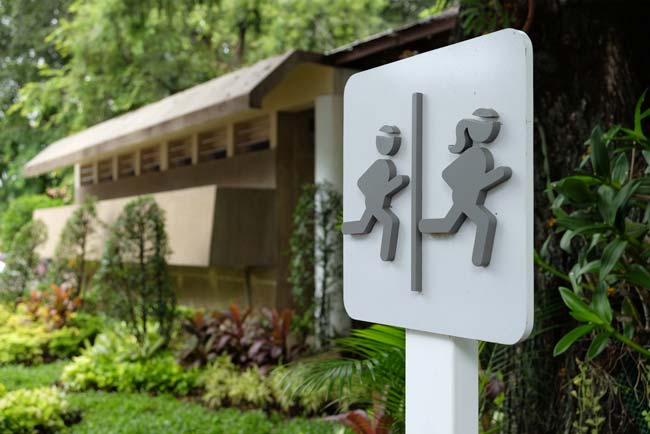You’re jogging through your neighborhood when all of a sudden you get a familiar feeling — an all-too-urgent urge. You wonder: What is it about running that always makes me need to pee?
Well, don’t think you’re alone! Runners’ incontinence is an actual thing. And it’s extremely common among female runners and other female athletes.
In fact, a study published in the Journal of Human Kinetics found that up to 40 percent of elite female athletes experienced leaking during running or other high-impact activities.
But while the problem is common among women, the mid-run urge to urinate also happens to men.
So, what’s causing it, and how can you stop it? Read on for a look at the issue.
Runners’ incontinence: The cause
Let’s first put a definition to “incontinence” itself. Incontinence is defined as the unintentional loss of urine, which can occur for many reasons.
There are two main types of incontinence — urgency incontinence and stress incontinence —and a third type, known as “mixed” incontinence, which is a combination of these two.
Mixed incontinence may present itself when physical movement or some type of activity puts pressure on your bladder, leading to leakage. This type of incontinence may happen when the muscles controlling urination weaken or are ineffective.
Depending on the severity, people with mixed incontinence may even experience leakage when they cough, sneeze or laugh.
Runners’ incontinence: Who’s at risk
Anyone can experience incontinence, but certain things can make it more likely. Women are at a higher risk overall than men.
The risk may increase for women who have had more than one pregnancy and vaginal delivery or who have experienced pelvic organ prolapse, where the bladder, urethra or rectum slide into the vagina.
Pregnancy in particular may cause muscles in the pelvic region to weaken, which often leaves some women surprised when they resume their exercise routine.
But even for women post-pregnancy, there are ways to help limit the effect of runners’ incontinence.
Runners’ incontinence: What to do
In many cases, those who experience incontinence while running may also experience leakage at other times. The best way to limit mixed incontinence is to strengthen the pelvic floor muscles.
How can you do this? Consciously squeeze the muscles involved in urinating and then loosen the muscles. Repeat the exercise 10 to 15 times in a row — and be sure to do the exercise regularly. As you progress, you’ll find that you can squeeze the muscles for longer at a time before loosening them.
You can also do exercises to retrain your bladder. Empty your bladder, then go out for a slow run near a restroom. Take note of your first urge to use the restroom and try to wait five minutes. In five minutes, see if you can wait longer.
If you repeat this exercise each time you run, you may find that you’re able to progressively hold the urge for longer before needing to stop.
There are other steps you can take to limit the risk of an unexpected leak on your next run.
- Hydrate enough, but not too much. You want to remain hydrated, but you also want to limit your intake of fluids in the time immediately preceding your run.
- Sip water, don’t gulp. Believe it or not, this will help your body better absorb fluids.
- Stick to water, not sugary liquids. These liquids can irritate the lining of the bladder, increasing the urge to go.
- Skip caffeine before a run. Caffeine has the same effect as sugary beverages — irritating the bladder lining and making the urge to go more severe.
- Limit certain foods, too. Foods that are spicy, carbonated, citrusy or that contain alcohol can all increase urinary urgency.
- Pee before you go. This seems like common sense, right? But just before you head out on a run, stop by the restroom to completely clear the bladder.
- Lean on padding. This might be a considered a last-ditch effort, but there are products available to help protect your clothing from those unexpected leaks on a run.
Experiencing the effects of incontinence in your everyday life? It’s not just you. Erlanger Urology helps thousands of women and men each year overcome their urological issues. And we can help you, too.







